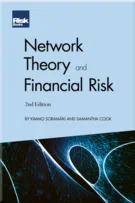Preface
Ulrik Schytz
Preface
Foreword: Preparing for change: Notes from an asset management leader
Preface
Introduction
The evolution of portfolio theory
Factor investing for practitioners
Introduction to alternative risk premium investing
Systematic credit investing
Enhanced risk parity and factor investing: ATP’s surplus investment strategy based on risk allocation to investment factors
Integrating climate risk considerations within portfolios: An investor’s viewpoint
Bridging theory and practice: Setting investment objectives
Bridging theory and practice: Developing an investment strategy and implementing a solution
Optimisation of trading portfolios under regulatory capital constraints
The wealth management perspective
The asset management challenge
Ignorance is bliss: Applying risk management techniques from alternatives to long only investing
The digitalisation of portfolio construction – Part 1
The digitalisation of portfolio construction – Part 2
Since the late 2000s, we have experienced at least two out-of-sample events in financial markets: the global financial crisis (GFC) in 2007–09 and the Covid-19 related sell-off in early 2020. These events, combined with a structural fall in inflation expectations, have led to several fundamental assumptions being revisited. When I began my career, it was believed that negative interest rates could only happen in scenarios such as complete anarchy, where savers would pay others to protect their money against robbery; yet today, the situation applies for government bonds in many OECD countries. Other key structural cases have been the rising share of global GDP and wealth in Asia, as well as the dominance of tech companies in global equity valuations.
These experiences underpin the need for building portfolio resilience. One simply has to acknowledge that the future is highly unpredictable. The Greek philosopher Socrates expressed this elegantly more than 2,000 years ago: “I know that I know nothing. Hence, I am wiser than the rest”. The equivalent approach for an investor today would be to build a robust ex ante framework around the portfolio construction that has stress-tested
Copyright Infopro Digital Limited. All rights reserved.
As outlined in our terms and conditions, https://www.infopro-digital.com/terms-and-conditions/subscriptions/ (point 2.4), printing is limited to a single copy.
If you would like to purchase additional rights please email info@risk.net
Copyright Infopro Digital Limited. All rights reserved.
You may share this content using our article tools. As outlined in our terms and conditions, https://www.infopro-digital.com/terms-and-conditions/subscriptions/ (clause 2.4), an Authorised User may only make one copy of the materials for their own personal use. You must also comply with the restrictions in clause 2.5.
If you would like to purchase additional rights please email info@risk.net









